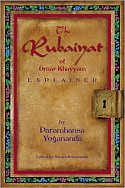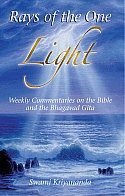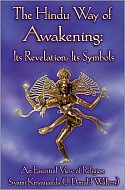Destined to become a classic, this is the most complete commentary available on parallel passages from the Bible and India’s ancient scripture, The Bhagavad Gita.

The Rubaiyat of Omar Khayyam Explained
Omar Khayyam’s famous poem, The Rubaiyat, is loved by Westerners as a hymn of praise to sensual delights. In the East, his quatrains enjoy a very different reputation . . .

Rays of the One Light
Parallel passages from the Bible and the Bhagavad Gita reveal a single unified teaching. East meets West and theological barriers tumble. Two scriptures become one Truth.

The Bhagavad Gita
Rarely in a lifetime does a new spiritual classic appear with the power to change lives . . .

The Hindu Way of Awakening
Brings order to the seeming chaos of the symbols and imagery in Hinduism and clearly communicates the underlying teachings from which these symbols arise.

Spiritual Interpretation of the Lord’s Prayer
Paramhansa Yogananda wrote extensively on the deeper meaning of Christ’s words, to help bring a return to true Inner Communion with God and Christ. This document may take a moment to load… [scribd id=15906252 key=key-l3rd9c1vtaq6xzmvixx mode=scroll]

Why are scriptures often allegorical?
Question from brock: If the scriptures are allegorical or symbolic, why did the authors choose to write in this complicated way? Why not just spell it out like it is done in the contemporary books? I would think the saints would want to be compassionate to trees and save lots of paper that would be used on interpretations, and alas, misinterpretations!
- Page 2 of 2
- 1
- 2

